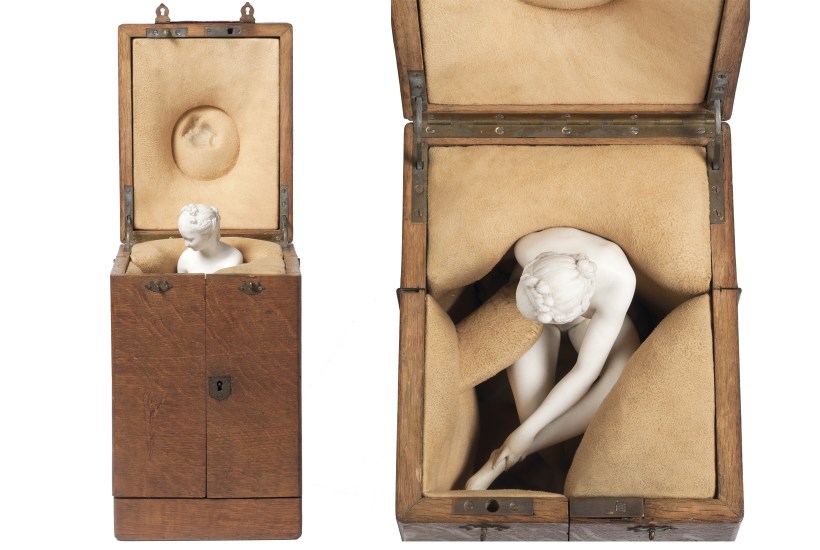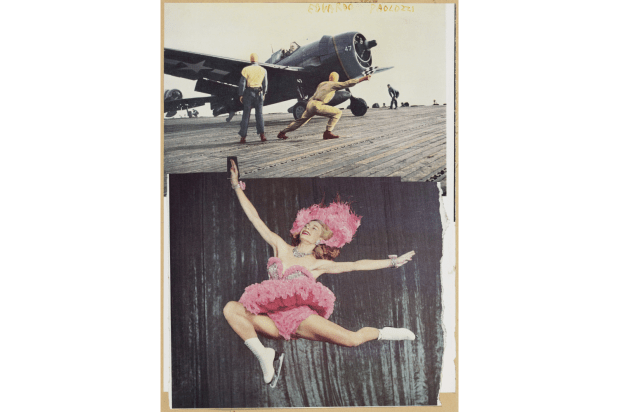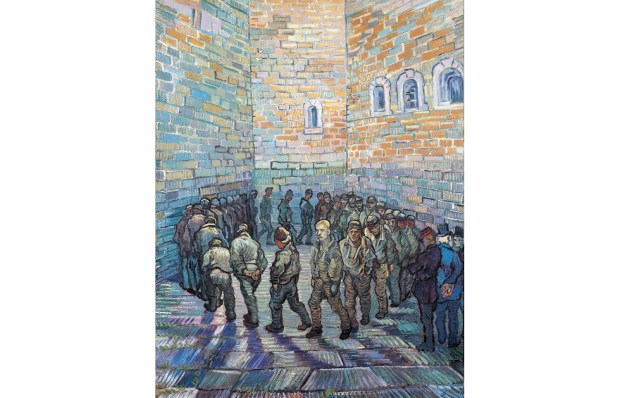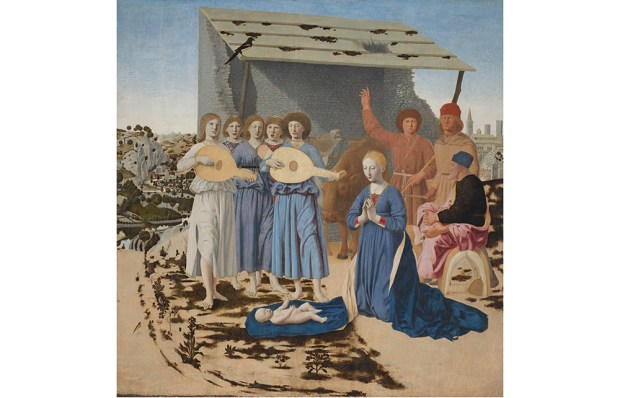‘Put beauty first and what you get will be used forever,’ said Roger Scruton in his BBC documentary Why Beauty Matters. The philosopher’s neat elision of beauty and utility is perfectly embodied by Étienne Maurice Falconet’s nymph, who is to be the star of a forthcoming lecture by Waddesdon Manor curator Juliet Carey. This small marble figure would be far less remarkable were it not for the elegance of the 19th-century wooden box in which she is housed. Exquisite, flesh-like pillows fill the space around the nymph’s form: the box and the sculpture seem at one, as though locked in a dance.
The nymph has been stored this way since the 19th century when Edmond de Rothschild commissioned a set of boxes for his collection from Chenue. The French fine-art storage specialist has been perfecting its craft ever since it transported valuable items on behalf of the noblesse in Marie Antoinette’s Paris. Carey notes that over the years the nymph has left indents and impressions in the box’s lining so that the casing is now perfectly attuned to the sculpture’s form. The Rothschild box even features a built-in stage which will display the nymph in all her glory once opened. The box has carried her through wars, revolutions and restitutions. But it’s clear from its design that it is offering the sculpture far more than protection from the elements.
‘The way in which an object is stored can magnify its beauty,’ says current director of Chenue Motet de La Panouse. He heralds the Statue of Liberty as a crowning example. In a masterful act of Franco-American diplomacy, the iconic monument was transported by Chenue to North America in a crate that was painted in the red, white and blue of the American and French flags. The unveiling of art can add to its aesthetic power, he says,‘much like a wrapped Dior handbag’.
Edmond de Rothschild’s boxes certainly make an art out of the unveiling, shrouding their contents in all manner of coloured velvets. There are similar examples in the British Museum: two wooden busts carved in the 1500s by Conrad Meit were until recently kept in fur-lined boxes, ostensibly to protect their delicate surfaces, but it’s hard not to delight in the contrast between wood and fur.
Christie’s recently sold a 15th-century reliquary whose tailor-made leather case is embossed with an intricate foliate design that is just as ornate as the object it houses. According to Christie’s head of sculpture, Donald Johnston, it’s rare for these cases to survive but when they do, they form a central part of the exhibit’s value. An elaborate 17th-century lathe-turned ivory from the Yves Saint Laurent sale of 2009 has a spectacular velvet-lined, gilded red leather case inscribed with Latin, whose shape echoes the ivory tiers and compartments. It’s only when looking at the object mirrored in its custom-made case that you become aware of the complexities of its form.
When Walter Benjamin reflected on the 19th-century Parisian interiors that gave birth to the very first Chenue boxes, he wrote: ‘The nineteenth century, like no other century… conceived the residence as a receptacle for the person, and it encased him with all his appurtenances so deeply in the dwelling’s interior that one might be reminded of the inside of a compass case.’
Like the nation’s art objects, we too have been encased in our homes, finding meaning from within our own four walls for months on end. Having been deprived of public gallery spaces for most of the pandemic, will we return to them with newfound relish? As the Falconet nymph shows, there’s pleasure and anticipation to be found in the physical unveiling of art — an experience to which we can all now lay claim as galleries open up again after months of closure.
Many artworks, however, are deliberately being concealed — for monetary gain. Hoards of works of art currently sit unseen in freeports where they can be viewed by owners on an appointment-only basis. The Geneva Free Port alone holds 1.2 million.
With no one to view them, the artworks in these vast, high-security, hermetically sealed warehouses have been reduced to tax-free assets whose primary purpose is to be bought and traded. In a stark contrast to the Falconet nymph, free port storage has enabled utility to trump beauty. The notion of millions of works of art voluntarily consigned to storage would have been anathema to the war generation; even in the depths of the second world war, when works from the National Gallery were placed in a disused slate mine in Snowdonia, a picture a month was transported back to the capital at great risk and cost to lift the spirit of Londoners.
The absence of physical art during our current national crisis seems to have propelled us towards the digital. An online artwork by Beeple recently fetched $69.3 million at auction and many more artists are seeking to capitalise on the cryptocurrency speculation.
But is this rush towards digitalisation anything more than a pandemic fad? It’s heartening to hear the likes of Rebecca Lyons, who is in charge of the permanent collection at the Royal Academy, talk about the renewed appetite that she hopes to see for physical exhibits once visitors are able to enter the Royal Academy again. ‘Art objects lose their purpose when there is no one to view them in the flesh,’ she says, citing the extraordinary amount of physical work that goes into preserving and storing the collection, from regular humidity checks to employing the services of the marvellously named ‘sculpture duster’ — a student of art conservation whose job it is to clean the exhibits. ‘Ironically, the greatest threat these objects face can be visitors,’ says Lyons. A single wet day, with the hundreds of raincoats and umbrellas that it will usher into a carefully controlled gallery space, can be a conservator’s nightmare.
But, as Lyons is quick to add, what is the point of preserving these works if they are never seen? ‘I think after the pandemic we could look more slowly at things because we’re aware of the privilege of looking. It would be good if gallery-going became a more meditative experience,’ she says.
Widespread screen-fatigue could well mean we yearn for the return of physical art — for the simple pleasure of sitting in a room with a beautiful object. It’s quite possible artistic tastes could tilt back towards the traditional as a result of time away from galleries. Online stunts such as Beeple’s seem vapid when compared with the visceral aestheticism of sculptures like the Falconet nymph. As our national artworks emerge from their long, pandemic-induced slumber, perhaps we will see a quiet embrace of art for art’s sake. Whatever happens, we can all enjoy the unveiling.
Got something to add? Join the discussion and comment below.
Get 10 issues for just $10
Subscribe to The Spectator Australia today for the next 10 magazine issues, plus full online access, for just $10.
Juliet Carey’s Waddesdon Manor lecture Storing and Staging: Baron Edmond’s Boxes will take place online on 10 May.
You might disagree with half of it, but you’ll enjoy reading all of it. Try your first month for free, then just $2 a week for the remainder of your first year.














Comments
Don't miss out
Join the conversation with other Spectator Australia readers. Subscribe to leave a comment.
SUBSCRIBEAlready a subscriber? Log in